1. Kleinknecht RA, Klepac RK, Alexander LD. Origins and characteristics of fears in dentistry. J Am Dent Assoc. 1973; 86:842–848. PMID:
4511174.
2. Holst A, Evers H. Experimental studies of new topical anesthetics on the oral mucosa. Swed Dent J. 1985; 9:185–191. PMID:
3866334.
3. Nutter DP. Good clinical pain practice for pediatric procedure pain: neurobiologic considerations. J Calif Dent Assoc. 2009; 37:705–710. PMID:
19927613.
4. American Academy of Pediatric Dentistry. Guideline on Use of Local Anesthesia for Pediatric Dental Patients. Pediatr Dent. 2016; 38:204–210. PMID:
27931461.
5. Kreider KA, Stratmann RG, Milano M, Agostini FG, Munsell M. Reducing children’s injection pain: lidocaine patches versus topical benzocaine gel. Pediatr Dent. 2001; 23:19–23. PMID:
11242725.
6. Wu SJ, Julliard K. Children's preference of benzocaine gel versus the lidocaine patch. Pediatr Dent. 2003; 25:401–405. PMID:
13678108.
7. Shehab LA, Basheer B, Baroudi K. Effectiveness of lidocaine Denti patch® system versus lidocaine gel as topical anesthetic agent in children. J Indian Soc Pedod Prev Dent. 2015; 33:285–290. PMID:
26381629.
8. Primosch R, Rolland-Asensi G. Comparison of topical EMLA 5% oral adhesive to benzocaine 20% on the pain experienced during palatal anesthetic infiltration in children. Pediatr Dent. 2001; 23:11–14. PMID:
11242723.
9. Abt E. Topical anesthetics are more effective in diminishing pain from needle stick insertion alone compared to reducing pain from insertion with anesthetic injection. J Evid Based Dent Pract. 2010; 10:160–161. PMID:
20797662.

10. Martin MD, Ramsay DS, Whitney C, Fiset L, Weinstein P. Topical anesthesia: differentiating the pharmacological and psychological contributions to efficacy. Anesth Prog. 1994; 41:40–47. PMID:
8638859.
11. Gill CJ, Orr DL 2nd. A double-blind crossover comparison of topical anesthetics. J Am Dent Assoc. 1979; 98:213–214. PMID:
370178.

12. Keller BJ. Comparison of the effectiveness of two topical anesthetics and a placebo in reducing injection pain. Hawaii Dent J. 1985; 16:10–11.
13. Kincheloe JE, Mealiea WL Jr, Mattison GD, Seib K. Psychological measurement on pain perception after administration of a topical anesthetic. Quintessence Int. 1991; 22:311–315. PMID:
1891606.
14. Tulga F, Mutlu Z. Four types of topical anesthetic agents; evaluation of clinical effectiveness. J Clin Pediatr Dent. 1999; 23:217–220. PMID:
10686868.
15. Chan SK, Karmakar MK, Chui PT. Local anesthesia outside the operating room. Hong Kong Med J. 2002; 8:106–113. PMID:
11937665.
17. American Dental Association. ADA Guide to Dental Therapeutics. 1st ed. ADA Pub Chicago;1998. p. 10–16.
18. Munshi AK, Hegde AM, Latha R. Use of EMLA: is it an injection free alternative? J Clin Pediatr Dent. 2001; 25:215–219. PMID:
12049081.

19. Riba H, Al-Zahrani S, Al-Buqmi N, Al-Jundi A. A review of behavior evaluation scales in pediatric dentistry and suggested modification to the Frankl scale. EC Dent Sci. 2017; 16:269–275.
20. Tsze DS, von Baeyer CL, Bulloch B, Dayan PS. Validation of self-report pain scales in children. Pediatrics. 2013; 132:e971–e979. PMID:
23999954.

21. Nilsson S, Finnstrom B, Kokinsky E. The FLACC behavioral scale for procedural pain assessment in children aged 5-16 years. Paediatr Anaesth. 2008; 18:767–774. PMID:
18613934.
22. Varlinkova KN, Kabaktchieva R. Reaction of 5 and 6 year old children to local anesthesia during dental treatment. In : J of IAMB-Annual proceeding (Scientific papers); 2008. book2.
23. Touyz LZ, Lamontagne P, Smith BE. Pain and anxiety reduction using a manual stimulation distraction device when administering local analgesia oro-dental injections: a multi-center clinical investigation. J Clin Dent. 2004; 15:88–92. PMID:
15688965.
24. Aminabadi NA, Farhani RM, Balayi Gajan E. The efficacy of distraction and counterstimulation in the reduction of pain reaction to intraoral injection by pediatric patients. J Contemp Dent Pract. 2008; 9:33–40.

25. Colaric KB, Overton DT, Moore K. Pain reduction in lidocaine administration through buffering and warming. Am J Emerg Med. 1998; 16:353–356. PMID:
9672449.

26. Scarfone RJ, Jasani M, Gracely EJ. Pain of local anesthetics: rate of administration and buffering. Ann Emerg Med. 1998; 31:36–40. PMID:
9437339.

27. Masters JE. Randomised trial of pH buffered lignocaine with adrenaline in outpatient operations. Br J Plast Surg. 1998; 51:385–387. PMID:
9771366.
28. Champion G, Goodenough B, Von Baeyer C, Thomas W. Measurement of pain by self-report. Progress in pain research and management. 1998; 10:123–160.
29. Ship II, Williams AF, Osheroff BJ. Development and clinical investigation of a new oral surface anesthetic for acute and chronic oral lesions. Oral Surg Oral Med Oral Pathol. 1960; 13:630–636. PMID:
14446036.

30. Adriani J, Zepernick R, Arens J, Authement E. The comparative potency and effectiveness of topical anesthetics in man. Clin Pharmacol Ther. 1964; 5:49–62. PMID:
14107122.

33. Haasio J, Jokinen T, Numminen T, Rosenberg PH. Topical anesthesia of gingival mucosa by 5% eutectic mixture of lignocaine and prilocaine or by 10% lidocaine spray. Br J Oral Maxillofac Surg. 1990; 28:99–101. PMID:
2337571.
34. Holst A, Evers H. Experimental studies of new topical anesthetics on the oral mucosa. Swed Dent J. 1985; 9:185–191. PMID:
3866334.
35. Abu Al-Melh M, Andersson L, Behbehani E. Reduction of pain from needle stick in the oral mucosa by topical anesthetics: a comparative study between lidocaine/prilocaine and benzocaine. J Clin Dent. 2005; 16:53–56. PMID:
16170977.
36. Demare P, Regla I. Synthesis of two local anesthetics from toluene: an organic multistep synthesis in a project-oriented laboratory course. J Chem Educ. 2012; 89:147–149.

37. Fukayama H, Suzuki N, Umino M. Comparison of topical anesthesia of 20% benzocaine and 60% lidocaine gel. Oral Surg Oral Med Oral Pathol Oral Radiol Endod. 2002; 94:157–161. PMID:
12221381.

38. Dhawan P, Dhawan G. Topical anesthetics: How effective are they. Int J Dent Clinic. 2011; 3:11–13.
39. Nayak R, Sudha P. Evaluation of three topical anesthetic agents against pain: a clinical study. Indian J Dent Res. 2006; 17:155–160. PMID:
17217210.
41. Primosch RE, Robinson L. Pain elicited during intraoral infiltration with buffered lidocaine. Am J Dent. 1996; 9:5–10. PMID:
9002806.

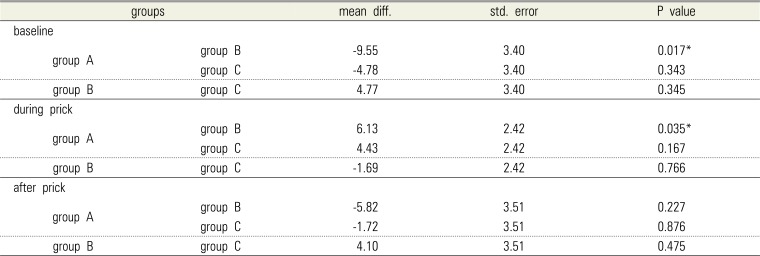
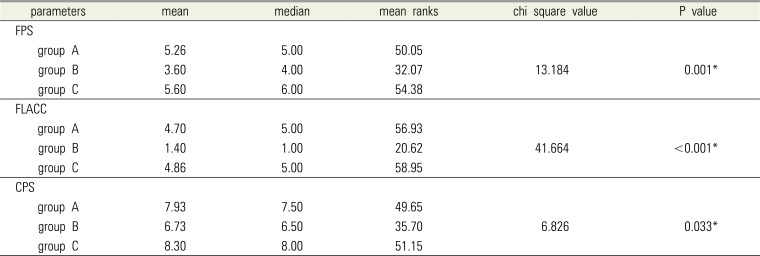
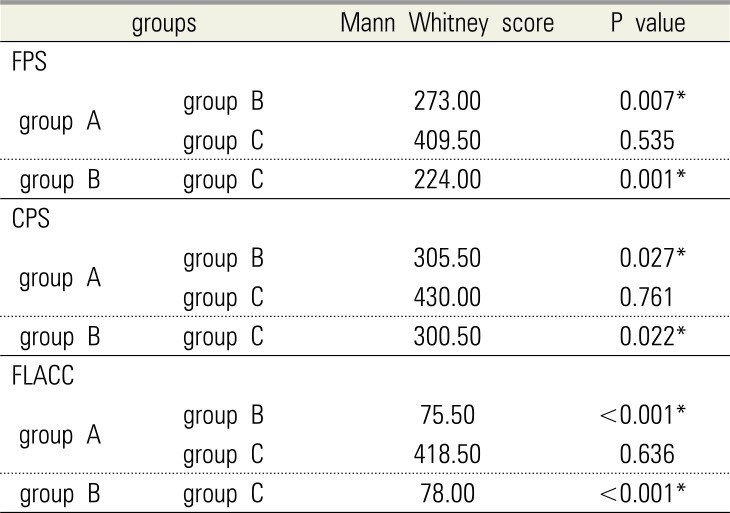




 PDF
PDF ePub
ePub Citation
Citation Print
Print



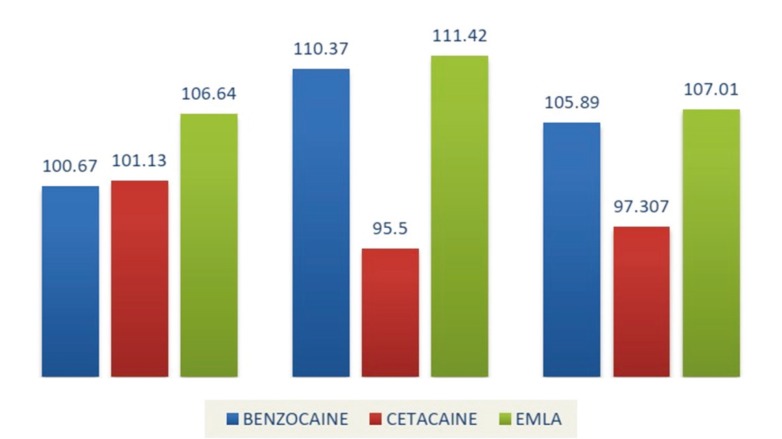
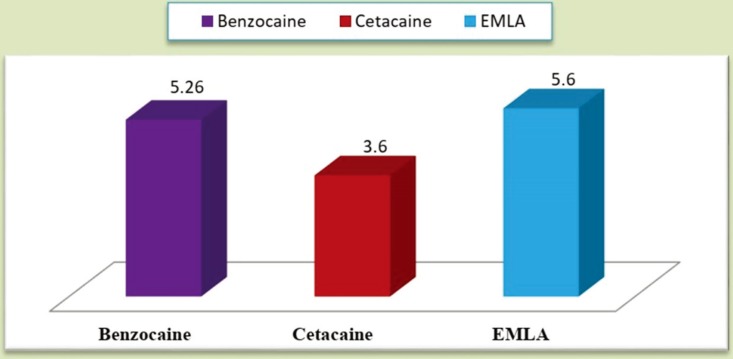
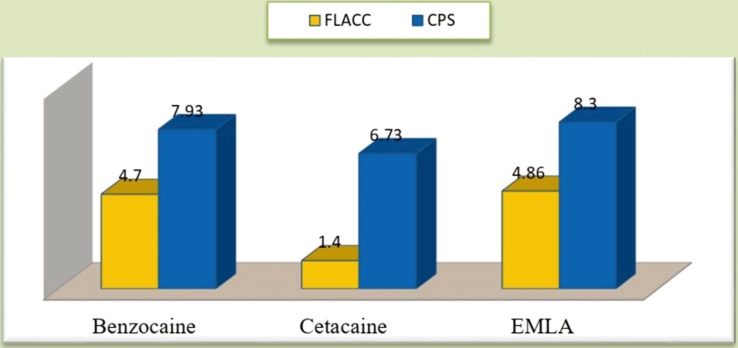
 XML Download
XML Download